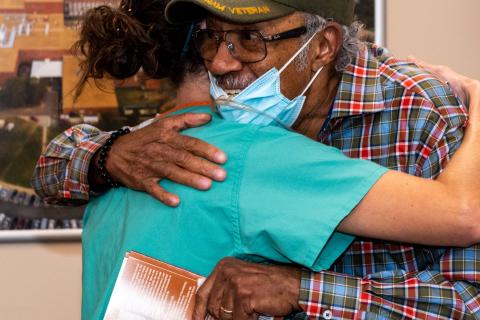
- Select a language for the TTS:
- UK English Female
- UK English Male
- US English Female
- US English Male
- Australian Female
- Australian Male
- Language selected: (auto detect) - EN
Play all audios:
IMPROVEMENTS IN WARFARE CAN VERY QUICKLY PROVE THEIR PREDECESSORS OUTDATED, BUT WHAT HAPPENS WHEN TWO NEW UNTESTED DESIGNS COME TO BLOWS DURING THE AMERICAN CIVIL WAR? War is often an
incredible catalyst for innovation, nations try to gain any advantage over the opposing side. The development discussed today is probably the biggest since cannons were placed on ships. The
evolution of ships which brought The USS Merrimack was launched from the Boston Navy Yard in 1855 and was commissioned in 1856. She was designed as a steam frigate with three masts and armed
with 48 guns split between several gun decks, she was the first of six steam frigates powered by steam propellers in the US Navy. The Merrimack was kept in reserve at the Virginia Norfolk
Navy Yard in case she was needed. On the 17th of April 1861, Virginia seceded and was made part of the Union. The port was no longer safe and the ships were hastily made ready to depart.
However, the night before secessionists had managed to sink small boats in the harbour making it impossible for some ships to cross and escape, including the Merrimack. In order to ensure
the Merrimack wasn’t captured, she was burned to the waterline and sunk on the 20th of April. The Confederates at the time were in desperate need of ships and decided to use the burned husk
of a steam frigate resting in the harbour to their advantage. She was chosen to become an ironclad as is was the only large ship with engines in the area ready to be converted. The wreck was
salvaged and a design was picked with what resembled an iron barn floating in the water as the lower hull would be submerged in order to keep a low profile in the water. She would be armed
with 14 gun ports as well as a ram which would prove to be fairly ineffective in the upcoming Battle of Ironclads as her opponent would prove to be far more nimble and able to outmanoeuvre
the now renamed Virginia. BATTLE OF THE MONITOR AND MERRIMACK The Union managed to hold a blockade over Hampton Roads blocking much essential international trade going through Richmond and
Norfolk. The Confederacy decided to try and use the newly built ironclad to try and break the blockade. Still carrying workers on board trying to finish the ship she set sail towards the
Union fleet supported by a few small auxiliary vessels. Virginia encountered its first opponent in the form of the USS Cumberland, a sail-powered all-wooden ship, which Virginia crippled
with its first salvo of shots. The Cumberland was promptly finished off with a swift ram in the bow and proceeded to sink, unfortunately, the manoeuvre ripped the Virginias bow ram from the
ship and caused a small leak. The Cumberland had been accompanied by a second frigate called the USS Congress which saw the absolute annihilation and decided to try and run towards shallow
waters. Unfortunately, they only managed to beach their vessel. After an exchange of fire, the heavily damaged Congress surrendered and the crew was transferred off the ship. During this
process, both ships were very vulnerable and a Union shore battery took the opportunity to fire at the stationary ironclad. Furious at the audacity of the shore battery to fire upon his ship
which was accepting prisoners of war he ordered Virginia to fire at the Congress with hotshot, an early form of incendiary ammunition. The Congress burned for several hours into the night
marking the moment that wooden ships became obsolete. Later that night the USS Monitor arrived at the Union-held Fort Monroe. The Monitor was an innovative design, featuring a very shallow
iron hull and an incredibly innovative rotating gun turret for its armament. When the Union found out about Virginia’s construction a rapid effort to create a superior ship ensued. The
ironclad board was commissioned and around 17 designs were considered. Eventually, the board settled on John Erricsons design which relied completely on steam power and possessed a turret,
an invention which had never previously been implemented by any other navy but would bring around a whole new era of warfare. The ship was promised to be completed within 100 days but was
rushed to Hampton Roads slightly early in order to battle the “Rebel Monster”. The following day, on the 9th of March 1862 the two iron ships finally came to blows and would change how naval
combat was conducted forever. The Monitor was far smaller and nimbler than her opponent and was able to easily outmanoeuvre the floating metal shed, however, was unable to penetrate the
Virginias heavy armour. Virginia, on the other hand, was notable for its obscenely massive turning radius and apparently taking 45 minutes to complete a full circle, struggled to keep its
weapons pointed at the enemy. The two vessels closed to almost point-blank range and proceeded to unload onto each other in a furious exchange of firepower. The Monitor was smaller and more
nimble making it difficult to hit with Virginia's heavy front cannon but was hit several times. The armour plating on both ships proved to be too heavy for either ship's cannons
and after several hours the Monitors pilothouse was hit directly blinding her captain. Monitor retreated to shallower waters where Virginia couldn't follow and remained there for a
while just out of the Virginias reach. Seeing no further purpose in remaining Virginia returned to her home port for repairs in Gosport and remained in drydock till April 4th even though she
didn't suffer any significant damage. The Monitor returned to port too once the coast was clear of the enemy ironclad. The battle between the ironclads ended indecisively as no ship
was crippled or sunk however the effort to break the blockade had failed as following the battle it was bolstered by many other ships including a paddle steamer fitted with a ram. During the
following months, Virginia cruised nearby several times in an effort to draw the Monitor out but this never came to fruition as the Monitor’s crew was under “strict do not engage the
Virginia” orders as such the two would never come to blows again. The battle had a massive impact on naval warfare as it sparked an arms race across the world. Wooden sail ships were clearly
no match for iron and turrets.








